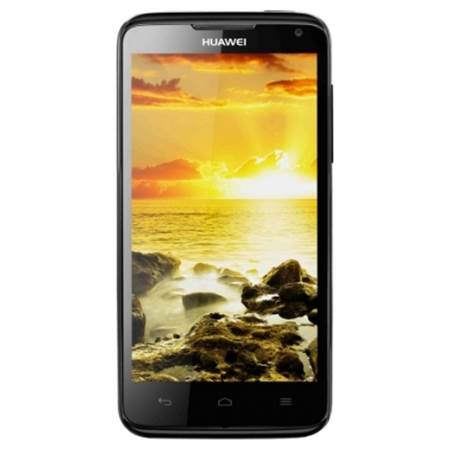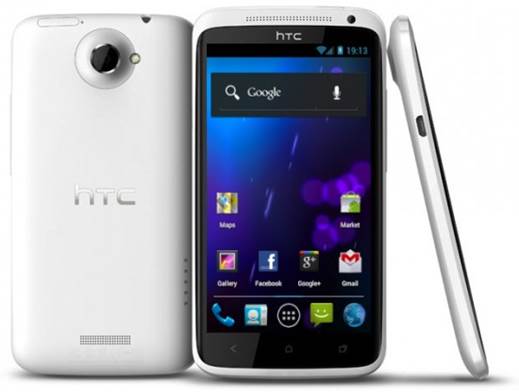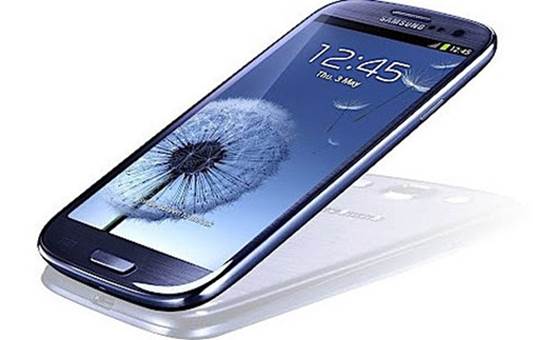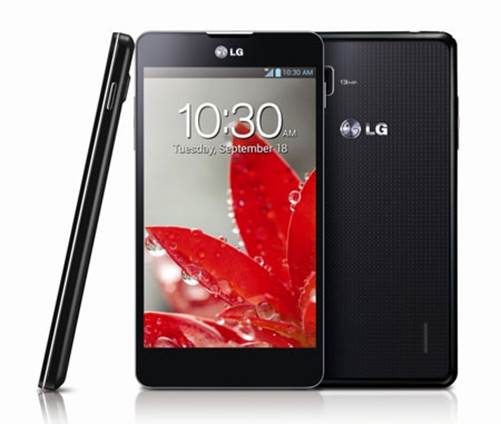Performance and battery life
The quad-core phones didn’t exist this time
last year, but the size of the smartphone market has changed a lot in the past
few months. Even in the recently April and May, looking at such a powerful CPU
which was pre-installed into a smartphone was a sufficient reason to turn
around and take the wallet out – now, it’s the only way for a new high-end
device to release without being making fun of. And the competition between the chipset
is equally fierce: Exynos, Tegra 3 and Snapdragon S4 are trying to make a
crowded presence in the industry. Huawei won’t use any option among these.
Instead of that, it chose internal HiSilicon K3V2 to be the main controller
behind the high-end device of the company. Cortex-A9 40nm Chipset has quad-core
CPU running at 1.4GHz, 16-core GPU and 64bit memory system. The decision to
face the strong competitors with 1 SoC which has never been challenged is a
quite brave move; a lot of competitive chipsets are prestigious brands which
make name for themselves. After months of researching, we finally have a chance
to see how it compares to the mighty silicon giants. First of all, let’s see a
group of compulsory tests on the table below.
Huawei
Ascend D1 Quad XL (K3V2)
·
Quadrant (v2.0): 5,210
·
Vellamo (v2.0): 1,530
·
AnTuTu: 12,114
·
SunSpidr 0.9.1 (ms): 1,528
·
GLBenchmark 2.5 Egypt Offscreen (fps): 14
·
CF-Bench: 13.298

Huawei
Ascend D1 Quad XL (K3V2)
HTC
One X (Tegra 3)
·
Quadrant (v2.0): 4,906 (Sense 4.0); 6,369 (Sense
4.1)
·
Vellamo (v2.0): 1,617 (Sense 4.1)
·
AnTuTu: 11,030 (Sense 4.0); 11,517 (Sense 4.1)
·
SunSpidr 0.9.1 (ms): 1,773 (Sense 4.0); 1,741
(Sense 4.1)
·
GLBenchmark 2.5 Egypt Offscreen (fps): 9.7
(Sense 4.1)
·
CF-Bench: 13.233 (Sense 4.0); 13.750 (Sense 4.1)

HTC
One X (Tegra 3)
Samsung
Galaxy S III (Exynos)
·
Quadrant (v2.0): 5,189
·
Vellamo (v2.0): N/A
·
AnTuTu: 11,960
·
SunSpidr 0.9.1 (ms): 1,460
·
GLBenchmark 2.5 Egypt Offscreen (fps): N/A
·
CF-Bench: 13,110

Samsung
Galaxy S III (Exynos)
LG
Optimus G (Snapdragon S4 Pro)
·
Quadrant (v2.0): 7,628
·
Vellamo (v2.0): N/A
·
AnTuTu: 11,230
·
SunSpidr 0.9.1 (ms): 1,312
·
GLBenchmark 2.5 Egypt Offscreen (fps): N/A
·
CF-Bench: 14,398

LG
Optimus G (Snapdragon S4 Pro)
SunSpider: the lower the score, the
better it is. All phones are tested on Android 4.0.
A quick review of the tests seems to show
that K3V2 is on par with HTC One X equipped with Tegra 3. However, this is what
we can’t add to the table because there’s no room left: the frequency score of Quad
XL is also equal to 4-core Meizu MX, even defeats LG Optimus 4X HD. What is our
viewpoint when putting this forth? If Quad XL was released at the initial
planned time, it would do a better job against the competitor at that time. K3V2
does a good job in front of the 40nm silicon fellas, but it can’t go head to
head with 28nm Snapdragon S4 Pro of Optimus G. (update: the score is equal to One
X on Sense 4.0, but this recent updates of this phone to Sense 4.1 has improved
some of its score, making Quad XL worse in some rough comparisons).
Indeed, at this period of the game, it
can’t be considered the world’s fastest or most powerful smartphone, but this
doesn’t mean that it’s a weak competitor. Our real-life experience with Quad XL
is what we expect from the first-generation quad-core processor: stable,
smooth, and you will see less stutter and delay. Well-informed users won’t be
disappointed much here, unless they risk entering the 3D Home launcher for some
reasons – in many occasions, we hit the Home button just to see ourselves
waiting for 5 to 10 seconds before all the apps and utilities are properly
displayed. We’re pleased with how fast the page load in the browser, and
there’s no delay in loading images. Gaming is also a success, because the
graphics-heavy games are as smooth and detailed as on phones with 16-core GPU.
When we received the device, CPU seemed to
be stuck with max speed of 1.2GHz, even in high-efficiency mode. This thing is
extremely in contrast to the 1.4GHz announcement of Huawei, so we looked for
the instructions from the manufacturers. We know that what processor gets stuck
at the same speed, regardless of the performance we’ve used. After entering *#*#1400#*#*
and restart the device, the processor immediately jumps up to 1.4GHz. This is a
concern for credulous users who buy the phone without recognizing that it
doesn’t run at its full strength.

XL
is famous for a pretty large 2,600mAh battery taking plenty of space on the
back.
So, beside that fault, the overall
performance seems to be on par with One X and GS3 – but how about battery life?
After all, XL is famous for a pretty large 2,600mAh battery taking plenty of
space on the back. We have performed intense tests with the phone in highest
performance settings, letting you enjoy the entire 1.4GHz provided by each core
(standard battery saving mode will lower it down to 1.2GHz). Our test,
including looping a video at 50% brightness while connecting to HSPA+ and
receiving the social media notifications and pushing email, has run in 8 hours
25 minutes before drained. With regular use – which means normally checking mail
and social media, as well as making phone calls occasionally, texting and
taking photos – we can easily make it to the second day with a little battery
life remains. Highest performance settings won’t help you to move on to the
second day, but unskilled users will find it more successful by entering the
battery saving mode and taking advantages of the things available on D1 Quad XL
moderately. The phone can reach the max speed of 21Mbps/download and
5.76Mbps/upload by using HSPA+ radio, and it consists of 850/900/1,700/1,900/2,100MHz
band. As you expected, the speed will be different based on the factor such as
which network you use and the overall signal power, but our experience can only
reach around the average level. In other words, it won’t make any impression,
but will fulfill it tasks. Call quality also meets our expectation, as we have
clear conversations, which is mostly thanks to the choice of Huawei in Audience
EarSmart noise-reducing processor. We realized that the speakerphone was pretty
quiet compared to Galaxy S III, but you’d be fine when using it as long as
you’re not in the crowded area. When talking about sound, D1 Quad XL bundles
with Dolby 5.1 Surround Sound and preinstalled Dolby Mobile 3.0. We won’t be
able to test the first feature, but we’ve connected the Klipsch Image S4A
in-ear headphones and have an interesting experience when “getting mixed up in”
many audio settings Dolby Mobile provides for listening to music as well as
watching films. The sound is loud and provides plenty of clarity for listeners
who love treble and bass. We find some regular EQ options which help to change
the sound following your hobbies. If you want to connect the phone with HDTV, you
have access to DLNA and MHL options. You won’t see excessive additions for UX here;
for example, plugging a phone to a MHL setting only provides HDMI mirroring ability
without any extra features – unless you watch the home pages in horizontal
modes which is as feature.
Conclusion
To be frank: when Huawei Ascend D1 Quad XL
begins to hit the shelves in the major part of the global market (the
availability in USA hasn’t been notified yet, though we can see that it’s
provided by the online importers), it will face some strong competitors. Which
was once advertised as the “world’s fastest smartphone” is now another product
in an increasing list of the quad-core machine which is available on the
market, after months of delay. We don’t say it’s not powerful or fast on the
contrary, it run as exact as what you expect from a phone with 4-core CPU, and
it’s the best phone for Huawei up to now but regretfully, we don’t see many
features which will help the high-end phone of the company stand out. The
saving buoy of XL will be its price; about $450, it will be the only thing that
stops this special device from getting lost in the crowd.

The
saving buoy of XL will be its price; about $450
Info
·
Price: $450
Advantages
·
Stable performance
·
Excellent Android UI (mainly)
·
High resolution IPS screen
Disadvantages
·
Stuttering videos
·
Limited internal storage
·
Thick for its form factor
Key point
·
The first quad-core device of Huawei is strong
and powerful enough, but it may be forgettable quickly in a sea of strong
competitors.
|
Huawei
Ascend D1 Quad XL specs
·
Size: 5.08x2.52x0.43 inch (129.9x64.9x11.5mm)
·
Weight: 5.11 ounce (145g)
·
Screen size: 4.5 inch
·
Screen resolution: 1,280x720 pixel (330ppi)
·
Screen type: IPS+ (made by Toshiba)
·
Pin: 2,600mAh
·
Internal storage: 8GB (5.29GB is available for
users)
·
External storage: microSD (max out at 32GB)
·
Rear camera: 8MP, BSI, AF
·
Front camera: 1.3MP
·
Video recording: 1,080p rear (720p front)
·
NFC: No
·
Radio: HSPA+/UMTS: 850, 900, 1700, 1900, 2100
(max 21Mbps/download, 5.76Mbps upload)
·
Bluetooth: 3.0 HS version
·
SoC: 1.4GHz Quad-core Huawei HiSilicon K3V2;
40nm, 16-core GPU, 64bit memory
·
RAM: 1GB
·
MHL/DLNA: Yes/yes
·
Wi-Fi: 802.11b/g/n; only 2.4GHz
·
OS: Android 4.0.4
|